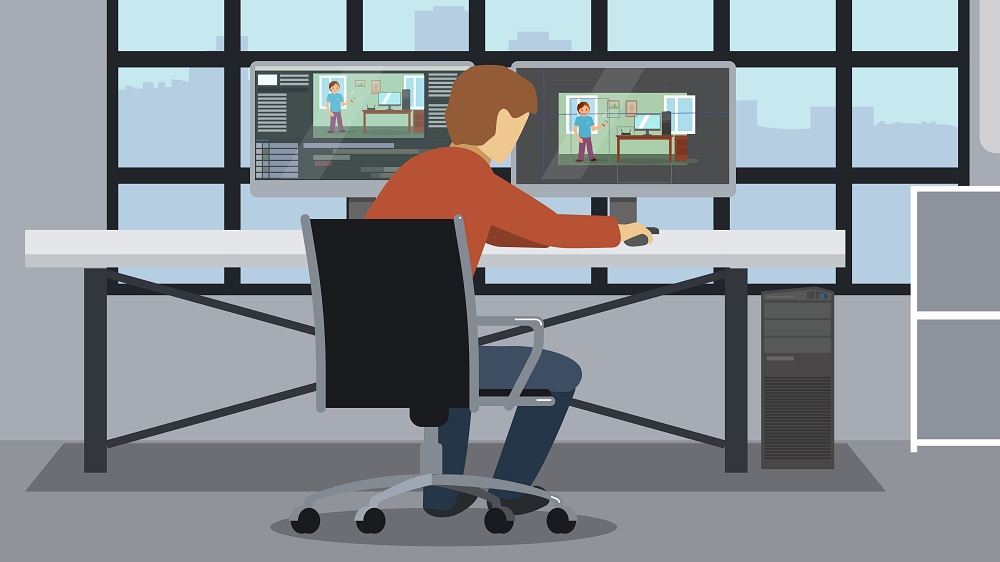Rotoscoping in 2D and 3D Animation: Similarities and Differences
Animation is an interesting reality where imagination and innovation meet. Perhaps the main method in the animation business is rotoscoping, which has been around for quite a long time. Rotoscoping includes following over surprisingly realistic film to make vivified arrangements that look reasonable and have similar developments.
However, do you have any idea if there are contrasts somewhere in the range of 2D and 3D rotoscoping? In this blog entry, we'll investigate the two methods, their likenesses, and contrasts to assist you with understanding them better! So lock in and prepare to realize it!
Introduction to Rotoscoping Animation
Rotoscoping is a cycle where a craftsman follows over surprisingly realistic film to make a vivified grouping. This method was first utilized at the beginning of the film and has since been utilized in an assortment of animation styles, from customary hand-attracted animation to current PC-produced animation.
D&D animation is a type of rotoscoping where the craftsman utilizes computerized devices to follow the surprisingly realistic film. This takes into consideration a more exact and productive work process, as well as the capacity to add computerized impacts that would be troublesome or difficult to accomplish with conventional techniques.
While both rotoscoping and D&D animation share a few similitudes, there are likewise a few key contrasts. Rotoscoping for the most part demands greater investment and exertion, as each casing should be separately drawn or followed. D&D animation, then again, is a lot quicker and more effective, as it very well may be done totally carefully.
Also, D&D animation frequently takes into account more artistic liberty, as the craftsman can try different things with various Advanced impacts that wouldn't be imaginable with customary rotoscoping strategies.
The Similarities Between 2D and 3D Rotoscoping
2D and 3D rotoscoping share a lot of likenesses. Following a picture to create a movement path for an energized object is one of the two methods. The most important difference is that 2D rotoscoping is done manually, while 3D rotoscoping is done with software.
The two methods require a lot of industriousness and fastidiousness. The connection can be monotonous, yet the results are a large part of the time worth the work. When done precisely, rotoscoping can make reasonable and sensible activities.
Regardless of the method, there are a few key things to keep in mind when rotoscoping:
- Make sure your lines are smooth and precise. The animation will appear more realistic as a result of this.
- Concentrate on the casing's overall design. Negative space and equilibrium are two examples of this.
- Consider the implications your next line will have for the product's development. This is especially important when using 3D rotoscoping, which gives you more control over the animation's appearance.
- Take as much time as is required! Because rotoscoping is a step-by-step process, rushing through it is not important.
Related post: Tips and Tricks to Create Immersive 3D Animations
Techniques for Effective Rotoscoping in Animation
2D and 3D rotoscoping share a lot of likenesses. Following a picture to create a movement path for an energized object is one of the two methods. The most important difference is that 2D rotoscoping is done manually, while 3D rotoscoping is done with software.
The two methods require a lot of industriousness and fastidiousness. The connection can be monotonous, yet the results are a large part of the time worth the work. When done precisely, rotoscoping can make reasonable and sensible activities.
Regardless of the method, there are a few key things to keep in mind when rotoscoping:
Make sure your lines are smooth and precise. The animation will appear more realistic as a result of this.
- Concentrate on the casing's overall design. Negative space and equilibrium are two examples of this.
- Consider the implications your next line will have for the product's development. This is especially important when using 3D rotoscoping, which gives you more control over the animation's appearance.
- Take as much time as is required! Because rotoscoping is a step-by-step process, rushing through it is not important.
Tools Used in 2D and 3D Animation
2D and 3D animation each have their own set of tools that are used in order to create the final product. 2D animation tools are typically software programs that allow you to draw or paint your images, while 3D animation tools are usually computer programs that create the illusion of depth and movement.
Regarding rotoscoping, there are similarities and differences between the two types of animation. In both cases, the animator starts with a reference image, a still frame from a movie or video, or a drawing. They then trace over this image to create their own version of it.
The main difference lies in how these images are created. In 2D animation, the artist will often use traditional drawing techniques to create their version of the reference image. This can be done by hand, or by using software such as Adobe Photoshop or Illustrator.
In 3D animation, on the other hand, the animator will use specialized software to build a three-dimensional model of the scene they want to recreate. This model can then be manipulated and animated to create the final product.
Both 2D and 3D animation have their own unique set of benefits and drawbacks. 2D animation is typically faster and easier to create, while 3D animation can be more realistic and detailed. Ultimately, it comes down to personal preference as to which method is used for rotoscoping (and other aspects of animation).
To Sum Up
In both 2D and 3D animation, rotoscoping is a powerful tool that lets animators create realistic 3D character animation, environment, and effects. However, the method involved with rotoscoping might be marginally unique between the two mediums, both use the following strategies to assist with rejuvenating their manifestations.
In light of these similarities and differences, it is essential for aspirant animators to comprehend how this technique can be applied to a variety of animation styles in order to gain a deeper understanding of the art form as a whole.






